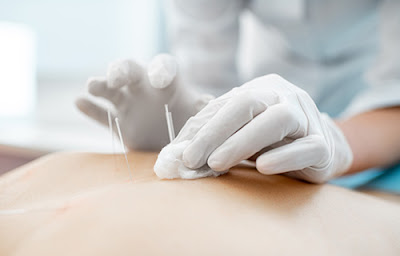A Beginner's Guide to Acupuncture
Acupuncture is a relatively safe and effective treatment strategy for reducing pain, improving healing, and improving overall well-being. The principle behind acupuncture is to use needles to adjust bodily functions to optimal levels. Acupuncture practice today is divided into two broad categories: traditional Chinese medicine (TCM) and medical acupuncture.
Most TCM practitioners believe that any health condition is caused by an imbalance in Qi flow and is thus treatable with needle therapy. Western acupuncturists typically have a more limited list of indications. A course of acupuncture therapy can last from a few weeks to several months.
The principle behind acupuncture is to use needles to adjust bodily functions to optimal levels. This technique has helped many chronic disease patients, both ancient Chinese and modern Western practitioners. Needling is a relatively safe and effective treatment strategy for reducing pain, improving healing, and improving overall well-being. But how exactly is this procedure carried out, and what benefits can be obtained?
Needle Puncture Technique
Acupuncture practice today is divided into two broad categories: traditional Chinese medicine (TCM) and medical acupuncture. Both have advantages, so the decision is personal. Most people's choices are influenced by which philosophy they prefer and which technique causes them the least concern.
TCM practitioners follow the concept of Qi, or energy flow, and the meridians along which it flows. To reach the acupuncture points, they use longer needles that are inserted deeper. Although modern science has found little evidence to support the existence of these energy channels, this technique has been used successfully for thousands of years.
Practitioners of medical acupuncture are graduates of western medical schools. Their needle application is based on anatomic data rather than traditional acupuncture points. These acupuncturists use shorter needles and shallower insertions. They also use fewer needles and keep them in for shorter periods of time. TCM practitioners believe this is a watered-down version of the real thing. Nonetheless, this method has provided relief for many patients.
Application of Puncture Conditions
A wide range of medical conditions can be treated with acupuncture. The ailments range from asthma to constipation, anxiety to weight loss. Most TCM practitioners believe that any health condition is caused by an imbalance in Qi flow and is thus treatable with needle therapy. Western acupuncturists typically have a more limited list of indications, the most common of which is unquestionably pain control.
Pain relief is the most thoroughly researched of all acupuncture indications. The majority of patients who use this method benefit significantly. A few examples include migraines, premenstrual syndrome, arthritis, carpal tunnel syndrome, and neuralgias. The gate-control theory of pain, which underpins its effectiveness, is also medically accepted and well researched. It claims that the needles can stimulate nerves, causing them to block pain trigger impulses.
Puncture Session Expected Outcome
It is critical to emphasize that acupuncture is used in addition to existing medical therapy. A patient should never stop taking medication or disregard medical advice in favor of needle puncture. Following a needle puncture regimen, the primary care physician can evaluate the patient's dependence on other therapies.
A course of acupuncture therapy can last from a few weeks to several months. This is determined by the severity of the medical condition. Because results vary, it is critical to have an open discussion with the acupuncturist about expected outcomes and time frames. In general, the patient will start to feel the benefits after three or four sessions. Certain conditions will actually worsen before improving, so staying informed is critical.
The use of traditional techniques with proven results has become a widely accepted practice in modern medicine. Acupuncture has repeatedly proven its worth. It is now effective, reproducible, and safe, thanks to modern practice guidelines. It is a healing gift from ancient sages that has the potential to help millions of people.

